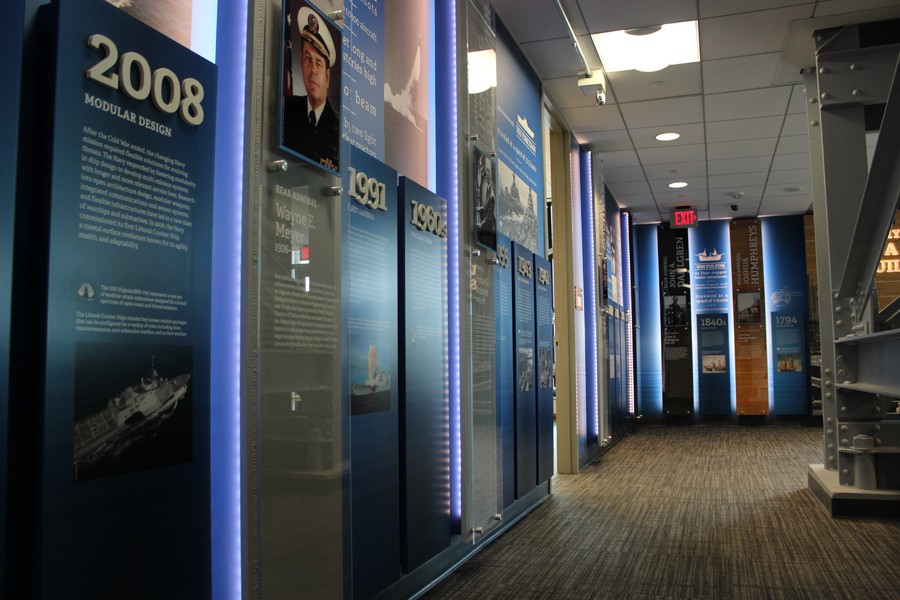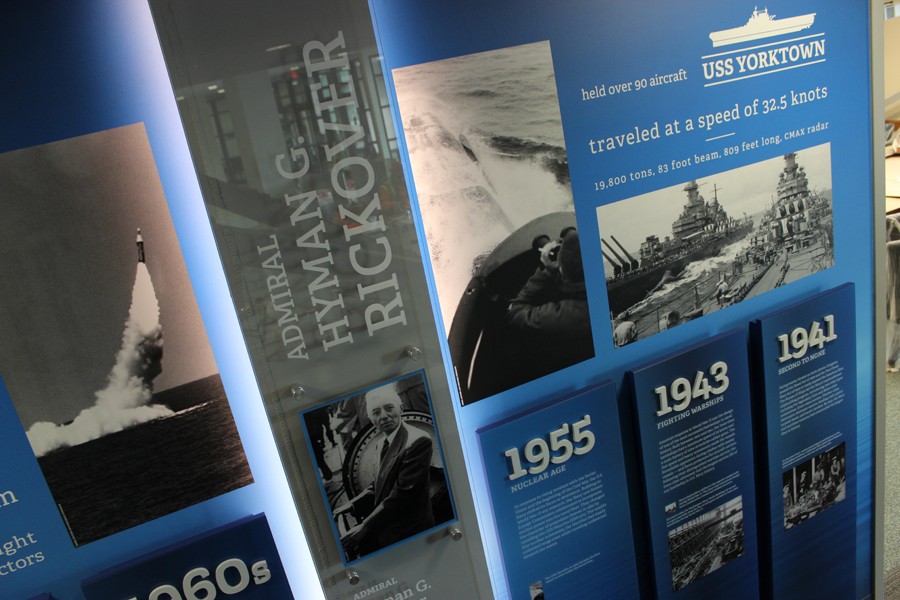
By Joshua L. Wick, Naval History and Heritage Command, Communication and Outreach Division
WASHINGTON (NHHC) -- Naval Sea Systems Command (NAVSEA) headquarters officially opened its recently redesigned, renovated and renamed building with a ceremony April 20, 2015, at the Washington Navy Yard.
With a nod to NAVSEA’s mission, Building 197 will be known as the Humphreys Building, named in honor of Joshua Humphreys, the original designer of the U.S. Navy’s first six frigates.
“As America’s first warship designer, he laid the foundation upon which the Navy and NAVSEA is built … As the designer, builder maintainer, and armorer of today’s Navy, NAVSEA carries on Joshua Humphreys’ work, and in fact our history and future are forever intertwined,” said NAVSEA Commander Vice Adm. William H. Hilarides.
Secretary of the Navy Ray Mabus and Chief of Naval Operations Adm. Jonathan Greenert, along with NAVSEA leadership and direct descendants of Joshua Humphreys, attended the ceremony Monday.
During the 17-month-long renovation, NAVSEA took the opportunity to bridge the gap between naval history and current innovations in shipbuilding with help from the Naval History and Heritage Command and the National Museum of the United States Navy.
A series of history display panels featuring a timeline of naval shipbuilding highlight the important role of innovation in shipbuilding throughout the Navy’s history since Joshua Humphreys’ era. It is located near a section that honors the 12 people who died when a lone gunman attacked the building Sept. 16, 2013.
“Our staff provided images, historical information, helped developed the shipbuilding timeline as well as recommended an appropriate design for the exhibits and other aspects,” said Jim Bruns, director of the National Museum of the United States Navy.
Bruns added that on a regular basis, NHHC researches, analyzes and interprets the Navy’s history, customs, and traditions.
Humphreys was born in Haverford, Pa., on June 17, 1751. He started early on as a ship’s carpenter apprentice in Philadelphia. His reputation grew in the colonies as a naval architect. In 1776, he was commissioned to build ships in Philadelphia and prepare them for the Revolutionary War. Years later in 1794, he was charged with building the Navy’s first six frigates.
Humphreys used his innovative designs and applied new technology to improve ships’ speed and efficiency. His most famous frigate is USS Constitution, the oldest commissioned warship afloat. Joshua Humphreys died on Jan. 12, 1838.
The Naval History and Heritage Command, located at the Washington Navy Yard, is responsible for the preservation, analysis, and dissemination of U.S. naval history and heritage. It provides the knowledge foundation for the Navy by maintaining historically relevant resources and products that reflect the Navy's unique and enduring contributions throughout our nation's history, and supports the Fleet by assisting with and delivering professional research, analysis, and interpretive services. NHHC is composed of many activities including the Navy Department Library, the Navy Operational Archives, the Navy art and artifact collections, underwater archeology, Navy histories, nine museums, USS Constitution repair facility and the historic ship Nautilus.
To watch video of the full ceremony click here.



